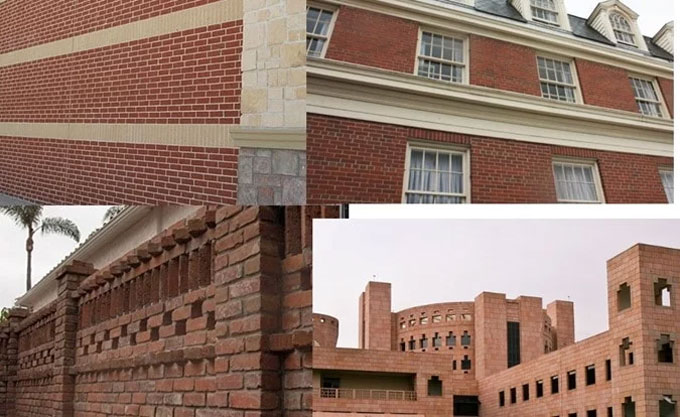On the basis of loads and other factors, the density of masonry walls in a building is designed. Given below the details of perfect thickness of masonry walls necessary at the design phase :-
As for instance, it is suggested to utilize invariable masonry wall thickness among lateral supports. The lateral support for masonry is arranged with cross walls, pilasters, and structural frame members.
Concerning deviation of masonry in vertical direction, the distance among floors, structural frames and roofs should be taken into consideration if the density of masonry wall is different.
Masonry wall thickness modifies among floor and roof as well as various floors that is generally imposed to attain thermal, sound and fire requirements.
If the density of masonry wall is modified, it is suggested to expand the thicker wall to the lower support level.
Building code requirements and specifications for masonry structure (ACI 530-11) affirms that, when the density of masonry wall is developed hollow masonry units is modified, then it is necessary to arrange a layer or various layers of solid masonry units or entirely grouted hollow masonry units among the thicker masonry wall and the thinner masonry wall.
The objective of arranging solid masonry course among thicker and thinner masonry wall should be transmitting loads perfectly from the above wall (thin wall) to the wall underneath (thick wall).
There are various constraints and limitations which should be taken into consideration for masonry walls apart from the case where the walls are designed for reinforcements on the basis of the engineering principles.
The constraint related to masonry thickness for various masonry walls types are explained in detail.
Thickness Requirements for Load Bearing Masonry Wall: The density of load bearing masonry wall should have been minimum 304.8 mm (1 ft.) dense for maximum wall height of 10.668m (35 ft.).
Besides, the density of masonry wall should be raised by 101.6 mm (4in.) for each consecutive 10.668m (35 ft.) height or fractions of this height calculated from the top of the masonry wall.
There are different cases in which the above conditions are not applicable for load bearing masonry walls which range from stiffened masonry wall, top storey masonry wall, residential masonry wall, masonry wall of penthouses and roof structures, plain concrete and grouted brick masonry wall, hollow masonry wall, faced masonry wall, nonbearing masonry wall.

Read Continue
~~~~~~~~~~~~~~~~~~~~~~~~
Published By
Rajib Dey
www.constructioncost.co
~~~~~~~~~~~~~~~~~~~~~~~~
~~~~~~~~~~~~~~~~~~~~~~~~
Published By
Rajib Dey
www.constructioncost.co
~~~~~~~~~~~~~~~~~~~~~~~~
No comments:
Post a Comment